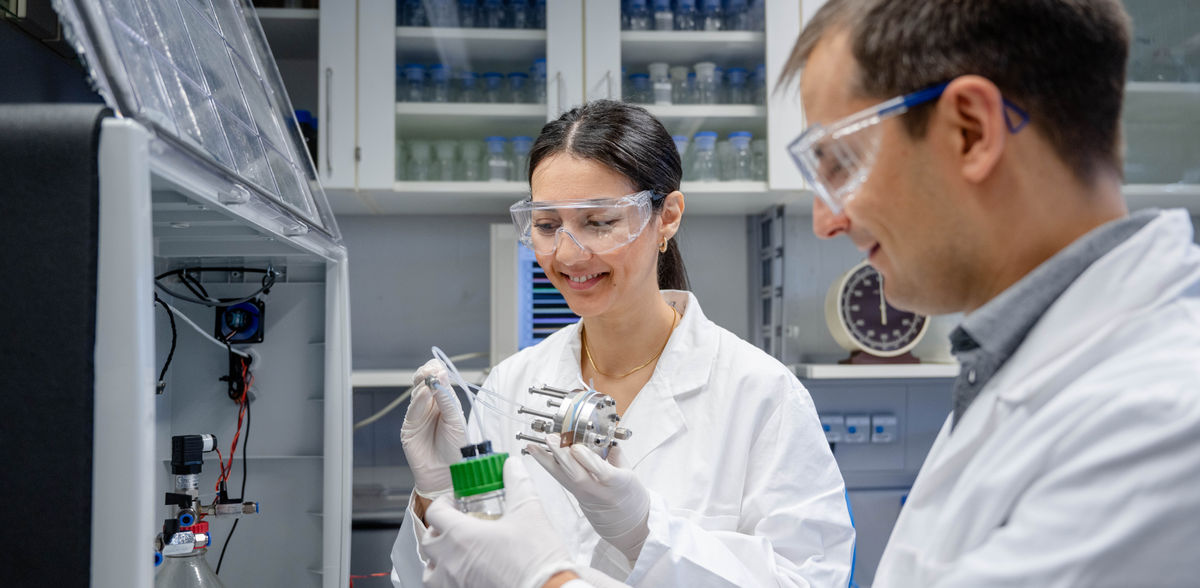Wastewater treatment plants as drivers for the energy transition
Technical add-on module can, in principle, turn any wastewater treatment plant into a CO2 sink and decentralized methane production plant
Advertisement
By implementing an innovative technology, any wastewater treatment plant would be able to produce methane from carbon dioxide in an environmentally friendly way.
If some microorganisms present in wastewater treatment plants are additionally supplied with hydrogen and carbon dioxide, they produce pure methane. Heating systems and vehicles running on natural gas can make use of this methane without the need of any technical modifications. Through the combination of the expertise of the research groups from Dr. Tito Gehring / Professor Marc Wichern and Professor Ulf-Peter Apfel, both at Ruhr University Bochum, a technical add-on module was developed that can, in principle, turn any wastewater treatment plant into a CO2 sink and decentralized methane production plant in an environmentally friendly way. They published their findings in the journal Cell Reports Physical Science of 16 August 2023.
Bad reputation, valuable properties
Methane has a bad reputation as a gas that has a harmful effect on the climate. It does, however, have several good properties that mean it could contribute to the energy transition: it is easier to handle and store than hydrogen because its molecules are larger, making it less volatile. Its energy density is four times higher than that of hydrogen, and it can be fed into existing natural gas infrastructure without any additional modifications. “Vehicles as well as heaters that run on natural gas can run on methane without difficulty,” explains Tito Gehring from the Chair of Urban Water Management and Environmental Engineering. He cites another advantage of the gas over hydrogen, which is produced in southern regions where water is scarce: if these regions export and use it, it effectively means that they export water. This is strongly mitigated by using methane as energy carrier, which reduces water losses by about half.
Methane can be produced very efficiently by methanogenic organisms and is produced, for example, in wastewater treatment plants as a component of biogas. “Some wastewater treatment plants thus cover their own energy needs and are self-sufficient in terms of energy,” points out Tito Gehring. However, only 60 percent of biogas is methane, the rest is mainly CO2. This is where the concept of the Bochum research groups comes into play: to produce highly concentrated methane, the methanogenic biomass need CO2 as well as hydrogen, which must be added to the system. In order to produce it, the group headed by Ulf-Peter Apfel from the Technical Electrochemistry group and the Electrosynthesis Department of Fraunhofer UMSICHT developed a dedicated electrolyzer with a catalyst free of precious metals, which ensures a long-lasting and energy-efficient supply of hydrogen. The implementation and testing of this system were performed by Ramineh Rad, the first author of the publication.
Replacing some of the natural gas
Fed by this in-situ produced H2, the microorganisms release about one molecule of methane per molecule of carbon dioxide consumed in an add-on module that can in principle be installed in any wastewater treatment plant. In the process, they also metabolize various compounds of the wastewater, requiring no additional nutrients. “Many wastewater treatment plants are connected to the natural gas grid and could simply feed it with the methane produced in this way” outlines Tito Gehring.
He considers green methane from wastewater treatment plants to be one of several building blocks of the energy transition: “Initial estimates have shown that about 20 liters of methane per day and per inhabitant could be obtained from CO2 capture from the waste gases of sludge treatment in wastewater treatment plants alone.” Doing so would also ensure that less methane is released into the atmosphere as a harmful climate gas. That’s because methane release from the extraction of natural gas, oil and coal is a major source of emissions of this greenhouse gas.
Original publication
Ramineh Rad, Tito Gehring, Kevinjeorjios Pellumbi, Daniel Siegmund, Edith Nettmann, Marc Wichern, Ulf-Peter Apfel; "A hybrid bioelectrochemical system coupling a zero-gap cell and a methanogenic reactor for carbon dioxide reduction using a wastewater-derived catholyte"; Cell Reports Physical Science, Volume 4
Other news from the department science
Most read news
More news from our other portals
See the theme worlds for related content
Topic world Synthesis
Chemical synthesis is at the heart of modern chemistry and enables the targeted production of molecules with specific properties. By combining starting materials in defined reaction conditions, chemists can create a wide range of compounds, from simple molecules to complex active ingredients.

Topic world Synthesis
Chemical synthesis is at the heart of modern chemistry and enables the targeted production of molecules with specific properties. By combining starting materials in defined reaction conditions, chemists can create a wide range of compounds, from simple molecules to complex active ingredients.
























































